Ready Wrigley, CDC’s Preparedness Pup, Inspires Our Youngest Partners
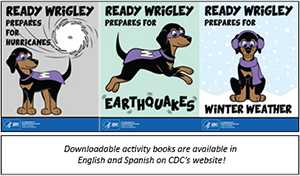
Taking Action with Ready Wrigley is as Easy as 1, 2, 3! CDC designed Ready Wrigley to incorporate many creative learning tools for children of all skill levels and ages. The new activity book series follows Wrigley and her family as they prepare for the unexpected. Children, families, schools, camps, and community organizations can access the activity books with ease. Ready Wrigley already has three editions available to the general public: preparing for hurricanes, earthquakes, and winter weather. CDC plans to expand Ready Wrigley’s preparedness portfolio, tackling important topics such as helping individuals with special healthcare needs and preparing for other emergency events like tornadoes, wildfires, and flooding. Follow one of these three simple ways to adopt your “preparedness pup” now!
-
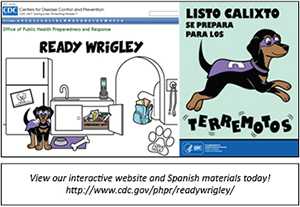
For Schools. Visit the Ready Wrigley website, and download your own copy of the Ready Wrigley activity books for your classroom!
- For Families. Visit the Ready Wrigley website to navigate the interactive website with your kids, learn how to make a kit, make a plan, and stay informed!
- For Other Agencies. Visit the Ready Wrigley website, contact CDC, and learn how to incorporate children’s preparedness into your messaging.
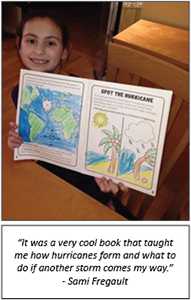
Ready Wrigley is Reaching Little Partners and Creating Big Value. In many elementary school classrooms, science lessons include discussions on weather and earth science. Samantha (Sami) Fregault, a third-grader from Attleboro, Massachusetts, recently studied the different types of weather storms and geological changes that happen around the world. Having been exposed to recent hurricanes such as Sandy and Irene, Sami’s parents note the importance of teaching children how to be ready for the unexpected, saying “nobody ever thinks these types of storms will happen, or at least not with the intensity that they sometimes do, so it’s great to be educated at home by our third-grader about what to do.” Coupling science education in schools with actionable learning through Ready Wrigley is just one way to bring the preparedness message home, particularly in those areas affected by particular emergencies.
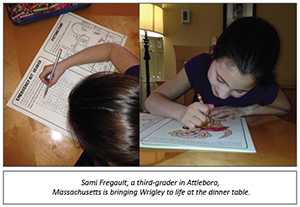
The Role of Youth Readiness in Public Health Preparedness. Save the Children recently endorsed CDC’s Ready Wrigley campaign noting the importance of preparing youth for natural disasters. “Children should be taught about emergency preparedness from a young age,” says Dr. Paul Myers, Save the Children’s Director of Emergency Preparedness. “By instilling the importance of personal responsibility and safety through disaster education and planning, parents or guardians will help their children develop habits that could very well save their lives.” The summary report from the National Summit on Youth Preparedness highlights the importance of youth preparedness, stating that “at the end of the 20th century, a disaster affected an estimated 66.5 million children each year (Penrose and Takaki, 2006), and this number will most likely increase, owing to shifts within society (e.g., increases in social conflict, hunger) and large climate changes that could lead to increases in vector-, air-, and water-borne diseases.” Arming children with a friend such as Wrigley provides an early intervention opportunity for youth and family preparedness. Personal preparedness is one of the major ingredients into building individual resilience before a public health emergency. Teaching families how to prepare themselves and how to be an advocate for preparedness in their communities is a first step towards fostering community recovery and resilience after a disaster strikes.
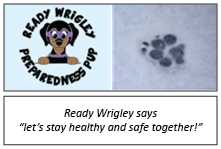
Partners are Helping Spread the Word by Promoting Children’s Resilience. The American Academy of Pediatrics (AAP) is focused on developing initiatives and influencing policy associated with disaster preparedness that meets the needs of children. The AAP has also endorsed Ready Wrigley, noting the great messages communicated by the activity book and the theme of AAP guidance such as learning how to prepare for and respond to extreme temperatures. The AAP notes on its website that “[p]ediatricians can serve as expert advisors to local, state, and federal agencies and committees and play a key role in disaster and terrorism preparedness with families, children, and their communities.” CDC is excited about the Save the Children and AAP partnerships and is eager to reach a significantly broader audience with the help of these new partners. CDC hopes to incorporate subject-matter expertise of partners during future activity book development. Partnerships multiply the effectiveness of interventions such as Ready Wrigley and CDC counts on exactly this type of community support to further its mission.
- Page last reviewed: April 10, 2015
- Page last updated: April 10, 2015
- Content source:


 ShareCompartir
ShareCompartir